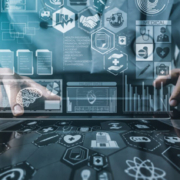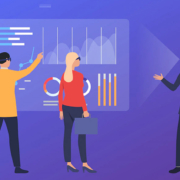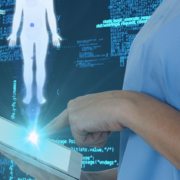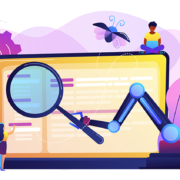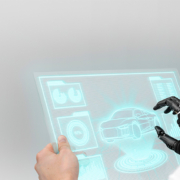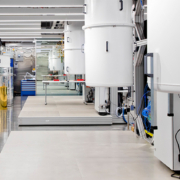Researchers Combine AI and the Internet of Things to Track Progression of Movement Disorders
Researchers have combined wearable “Fitbit”-type technology with AI to better track and monitor movement disorders.
In two ground-breaking studies, published in Nature Medicine, a cross-disciplinary team of AI and clinical researchers have shown that by combining human movement data gathered from wearable tech with a powerful new medical AI technology, they are able to identify clear movement patterns, predict future disease progression and significantly increase the efficiency of clinical trials in two very different rare disorders, Duchenne muscular dystrophy (DMD) and Friedreich’s ataxia (FA).
DMD and FA are rare, degenerative genetic diseases that affect movement and eventually lead to paralysis. There are currently no cures for either disease, but researchers hope that these results will significantly speed up the search for new treatments.
Scientists hope that, as well as using the technology to monitor patients in clinical trials; it could also one day be used to monitor or diagnose a range of common diseases that affect movement behavior, such as dementia, stroke, and orthopedic conditions.
Senior and corresponding author of both papers, Professor Aldo Faisal, from Imperial College London’s Departments of Bioengineering and Computing, who is also Director of the UKRI Center for Doctoral Training in AI for Healthcare, and the Chair for Digital Health at the University of Bayreuth (Germany), and a UKRI Turing AI Fellowship holder, said, “Our approach gathers huge amounts of data from a person’s full-body movement—more than any neurologist will have the precision or time to observe in a patient.
“Our AI technology builds a digital twin of the patient and allows us to make unprecedented, precise predictions of how an individual patient’s disease will progress.
“We believe that the same AI technology working in two very different diseases shows how promising it is to be applied to many diseases and help us to develop treatments for many more diseases even faster, cheaper, and more precisely.”
AI, Healthcare, and the Internet of Things
These two studies are just another example of how AI is being combined with the Internet of Things (IoT) for advanced diagnostics, earlier detection of disease, and better patient outcomes.
The Internet of Things (IoT), sometimes also referred to as The Internet of Everything (IoE), is a term used to describe the network of physical objects that we know as the “smart things” which are embedded with sensors, software, and other technologies for the purpose of connecting and exchanging data with other devices and systems over the internet.
In terms of healthcare, it can readily be seen how IoT allows for the interactivity between bedside monitors, smartwatches, fitness trackers, implanted medical devices, and any other “thing” that transmits or receives a signal containing pertinent medical data that can then be accessed or stored from or to anywhere.
In broad terms, IoT is changing the very nature of data acquisition and data analytics as they are applied to healthcare, transforming both into something far deeper and more powerful.
Traditionally, healthcare organizations currently base most of their clinical and financial analytics on conventional data sources like EHRs, insurance claims data, and lab results. But now, thanks to the Internet of Things, they are starting to integrate behavioral data from clients’ credit cards or fitness data from health trackers and smartphone data, including searches for health topics and likes on social media.
Add to that all of the “things” such as remote monitoring from internet-connected prescription bottles, Bluetooth-connected scales, or wearable devices such as in Professor Faisal’s studies, – and it is easy to see how IoT is bringing a vastness and richness of data to healthcare that was never before possible and can improve patient care across the board.
How BigRio Helps Bring Advanced AI Solutions to Healthcare
Like the muscle movement studies, leveraging IoT solutions for medical applications is an area where AI is making one of the technology’s biggest impacts in healthcare.
BigRio prides itself on being a facilitator and incubator for such advances in leveraging AI and IoT tech to improve healthcare delivery and drug discovery. In fact, we have launched an AI Studio specifically for US-based Healthcare startups with AI centricity. Our mission is to help AI startups scale and gear up to stay one step ahead of the pack and emerge as winners in their respective domains.
AI Startups face numerous challenges when it comes to demonstrating their value proposition, particularly when it comes to advanced AI solutions for pharma and healthcare. We have taken an award-winning and unique approach to incubating and facilitating startups that allow the R&D team and stakeholders to efficiently collaborate and craft the process to best suit actual ongoing needs, which leads to a faster, more accurate output.
We provide:
• Access to a top-level talent pool, including business executives, developers, data scientists, and data engineers.
• Assistance in the development and testing of the MVP, Prototypes, and POCs.
• Professional services for implementation and support of Pilot projects
• Sales and Marketing support and potential client introductions.
• Access to private capital sources.
BigRio excels in overcoming such initial hurdles, which present nearly insurmountable obstacles to a startup operation.
Rohit Mahajan is a Managing Partner with BigRio. He has a particular expertise in the development and design of innovative solutions for clients in Healthcare, Financial Services, Retail, Automotive, Manufacturing, and other industry segments.
BigRio is a technology consulting firm empowering data to drive innovation, and advanced AI. We specialize in cutting-edge Big Data, Machine Learning, and Custom Software strategy, analysis, architecture, and implementation solutions. If you would like to benefit from our expertise in these areas or if you have further questions on the content of this article, please do not hesitate to contact us.


